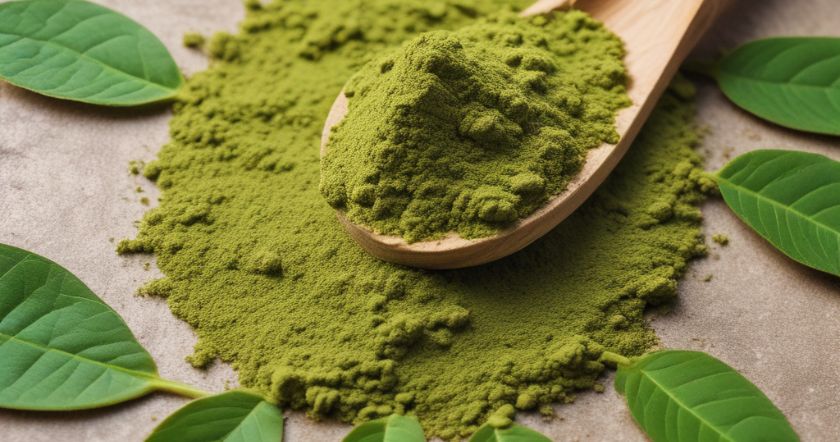Preventing Kratom Tolerance: Key Causes, Warning Signs, And Preventive Measures

Kratom as you all know is a plant native to Southeast Asia that is widely being used for its mood-enhancing and relaxing effects. However, frequent use of Kratom can lead to a condition called “Kratom tolerance”, meaning that you’ll not feel the same effects as you used to over time. In order to keep getting the most from Kratom without increasing the dosage, it’s important to understand why tolerance develops by pinpointing the early warning signs and taking steps to prevent it. This article is a comprehensive guide for you that will help you spot the tolerance signs, and offer practical tips on how to use Kratom responsibly to keep experiencing the same benefits.
What Is Kratom Tolerance?

A Kratom tolerance is when you’re using Kratom frequently or you’re taking the same dosage for a long time, your body gets used to it and you won’t feel the same effects anymore.
Kratom leaves have active ingredients called mitragynine and 7-hydroxy mitragynine. These substances work by connecting with certain spots in the brain that can influence how we feel. People who use Kratom powder might notice that it helps them relax, boosts their mood, and manages pain.
You might develop a tolerance to different Kratom strains even if you haven’t tried them before because they have similar active ingredients. Whether you use capsules, powder, or the best Kratom for high tolerance, taking it regularly can make it less effective. This happens because your body gets used to it, which can lead to problems like increased risk of dependence, addiction, and other side effects.
It’s really important to use Kratom carefully and not too often. Always talk to a healthcare professional before you start using it or if you’re thinking about changing how much you take.
4 Main Stages Of Kratom Tolerance: What You Should Know
Now you might be asking yourself, how quickly does Kratom tolerance build? It actually depends from person to person, how much Kratom they’re taking, and how frequently they’re taking it. Here are the four stages to understand how Kratom tolerance develops.
| Stage | Description | Symptoms/Effects |
| Initial Stage | At this stage, a person may experience their desired Kratom effects with a low dosage. The effects are quite noticeable with the first 3-4 time usage. | Effects may include relief from irritability, mood enhancement, and discomfort relief. |
| Moderate Stage | Your body starts to get used to the Kratom dosage you’re taking. The same dose no longer brings the same effects, and there might be a need to increase the dose to achieve the desired effects. | Reduced effectiveness of usual dose. |
| Advanced Stage | The advanced Kratom tolerance stage is when you need a higher-than-usual dosage to get the same effects. | Need for a higher dosage, withdrawal symptoms like sleeplessness and strain if the dosage is decreased |
| Severe Stage | This is the last and the most critical stage where you’re physically and psychologically too dependent on kratom. You need a large dosage to feel any of its effects. | High dependence on large doses, possible health issues, and addiction signs if trying to reduce or stop usage. |
Major Symptoms Caused By The Tolerance Of Kratom

Kratom tolerance symptoms may vary from person to person, but some of the most common symptoms may include the following;
Reduced Impact
Over time, Kratom may start to feel less effective. This reduced impact happens as your body becomes used to kratom.
Increasing Dosage Needs
You feel the need to increase your regular Kratom dosage because now you don’t feel the same effects anymore.
Experiencing Withdrawal
If you reduce your dosage or stop taking Kratom suddenly, you may feel withdrawal symptoms. These can include restlessness, irritability, muscle aches, and nausea.
Intense Cravings
Intense cravings for Kratom can develop, which might indicate that you’re becoming highly dependent on the substance.
Frequent Usage
To maintain the effects of kratom, you might start using it more frequently. This increased usage can further contribute to the dependence on tolerance.
Mood Changes
Some users may also feel mood fluctuations because of the change in dosage, which may include irritability and restlessness.
Managing Kratom Tolerance: What You Need To Do
Here are a few Kratom tolerance hacks that you can do when your Kratom stops working or when you stop feeling the same effects as you used to.
Consider Taking A Break
Taking a Kratom tolerance break is considered helpful to avoid dependence or severe side effects that are associated with regular usage. You can stop taking Kratom in one go, or you can also slowly try reducing the dosage.
Lowering The Dosage
Reducing your Kratom dosage can also help in reducing tolerance. You can do so by following a Kratom tolerance chart to reduce your dosage over time. Keep in touch with your healthcare provider to avoid withdrawal symptoms.
Use Different Strains
Kratom cycling, which also means using different Kratom strains, is also helpful in not developing Kratom tolerance. You can use one strain for a few days and then another to avoid tolerance.
Moderation Is The Key
Use Kratom in moderation, meaning that follow the recommended dosage and avoid using it daily as it’ll help in avoiding Kratom tolerance.
Using A Potentiator
A potentiator is a substance that helps boost the effects of Kratom in a natural way. Some of the most common potentiators are turmeric and grapefruit juice.
Kratom Tolerance Reset
A Kratom tolerance reset is when you stop taking Kratom altogether to reset your body’s resilience levels.
So, how long does it take for Kratom tolerance to reset? The answer to this is it may take several days or a few weeks. This process helps in getting rid of the alkaloids in your body to reset its tolerance levels. During this time, you must keep yourself hydrated, eat healthy, and take proper rest to help with this process.
After the reset process is done, you can restart your Kratom usage, but you should start with a lower dosage to avoid building tolerance. You can also practice Kratom cycling, using different strains to avoid tolerance.
Is It Possible To Avoid Kratom Tolerance?
It may be difficult to avoid Kratom tolerance, but it’s not entirely impossible. With the tips discussed above, you can get help in preventing Kratom tolerance from developing.
The most effective tips that can help prevent tolerance are to use Kratom in moderation, don’t use it daily, rather, consider using it twice a week so your body won’t become dependent or develop tolerance other than that you can do Kratom cycling, or you may try taking a Kratom break for a while to reset your body’s resilience.
Bottom Line
Kratom tolerance can highly affect the benefits of this herb by making your regular dosage ineffective, so your body craves a larger dosage to feel the same effects again.
But that doesn’t mean that you can’t manage Kratom tolerance. You can try reducing dosage, taking regular breaks, or switching between different Kratom strains. All these things help you enjoy the benefits of Kratom without developing tolerance.
Remember, moderation is the key to using any substance, if you do face any of the adverse effects, consult your healthcare provider immediately.
FAQs
How Quickly Does Kratom Tolerance Build?
Kratom tolerance can build quickly, especially if you use it daily or in large amounts. Some people might notice increased tolerance within a few weeks.
How To Lower Kratom Tolerance?
If you want an answer to the question, how long for a Kratom tolerance break? Consider taking regular breaks from using it, reducing your dose gradually, or using it less frequently. Some users also rotate strains to prevent tolerance buildup.
How Long For Kratom Tolerance To Go Down?
It can take several weeks for Kratom tolerance to decrease. Giving your body a break from Kratom and not using it for a while are the most effective methods for lowering the tolerance quickly.
